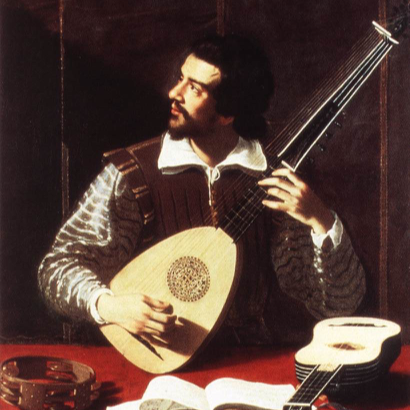If Baroque music isn’t really your thing, you’re probably not familiar with the theorbo.
It’s one of the weirder-looking instruments out there. If you can imagine a lute with a parasitic twin growing out of the top of its head, you’ve pretty much got it.
As alien as it might look to most of us now, it was one of the favoured instruments of 17th-Century Italy. The number of strings and the unusual tuning allowed a skilled player to provide what a normal lute could provide, plus an accompanying bass line.
Listening to this piece by Johannes Kapsberger, I suddenly began to wonder how in the world a person living in the modern world decides to seek out and master an instrument that is so old and so odd. So I reached out to Lucas Harris, who plays theorbo with an acclaimed Baroque orchestra in my home town. I threw some questions into an email, and he (very gracefully, as he was in the middle of a week’s run of concerts) responded:
How did you end up playing the theorbo?
A professional lutenist needs at least a few instruments to cover all the necessary repertoire: you need at least a Renaissance lute, theorbo, and Baroque guitar, and probably an archlute. I also have a couple of Baroque lutes, a cittern, bandora, Renaissance guitar, and early (19c) classical guitar – about a dozen total.
The Italian theorbo is the one that’s most appropriate for Italian music between 1600-1650 […] They also invented a different theorbo in England, and yet another in Germany – they all have different tunings that are based on the lutes played in those nations at the time. I’ve heard there is even a Swedish theorbo.
Getting back to the question, the short answer is that all working lutenists play theorbo. It’s the loudest of our instruments and therefore the one we work on the most, as it has more of a chance to be heard in ensemble work.
What do you love about the instrument?
Many of us also fall in love with its deep tone and big resonance, and that it gives a wonderful support when accompanying melody instruments or singers. It has a strong tone but a quick decay, so there’s a lot of rhythmic definition but it’s also transparent and easy to play/sing over.
I love it that the instrument would seem to be “imperfect” because of its re-entrant tuning . . . though in the end the strange tuning gives it lots of possibilities that don’t exist with other instruments. You can voice chords with really close dissonances, and you can use what we call ‘campanella’ fingerings to give passagework more flow and resonance and ease.
He also told me that it would be pretty difficult for a guitarist to learn the theorbo, which, while unsurprising, kind of saddened me a bit. A small corner of my imagination had started to visualize myself sitting in the town square in Milan, a fancy baroque hat on my head, and a theorbo in my arms.
For now, I’ll just listen to Kapsberger’s beautiful, captivating “Toccata Arpeggiata.” And maybe I’ll buy the hat.
What makes this a beautiful song:
1. Because it’s a series of arpeggios, there’s a real sense of forward movement, like it’s rolling slowly down a hill.
2. Often, two notes in the arpeggio will be the same, but played on different strings. I don’t know if this technique has a name, but I like it.
3. Despite being centuries old, it doesn’t feel antique to me. It could almost have been written in the same era as the song we featured in week 436. There’s a folk-music familiarity to Kapsberger’s music, which may be why the bluegrass band Clogs did a modified cover version on their 2006 album Lantern.
Recommended listening activity:
Reclining in the bath, and pretending it’s a Venetian gondola.
